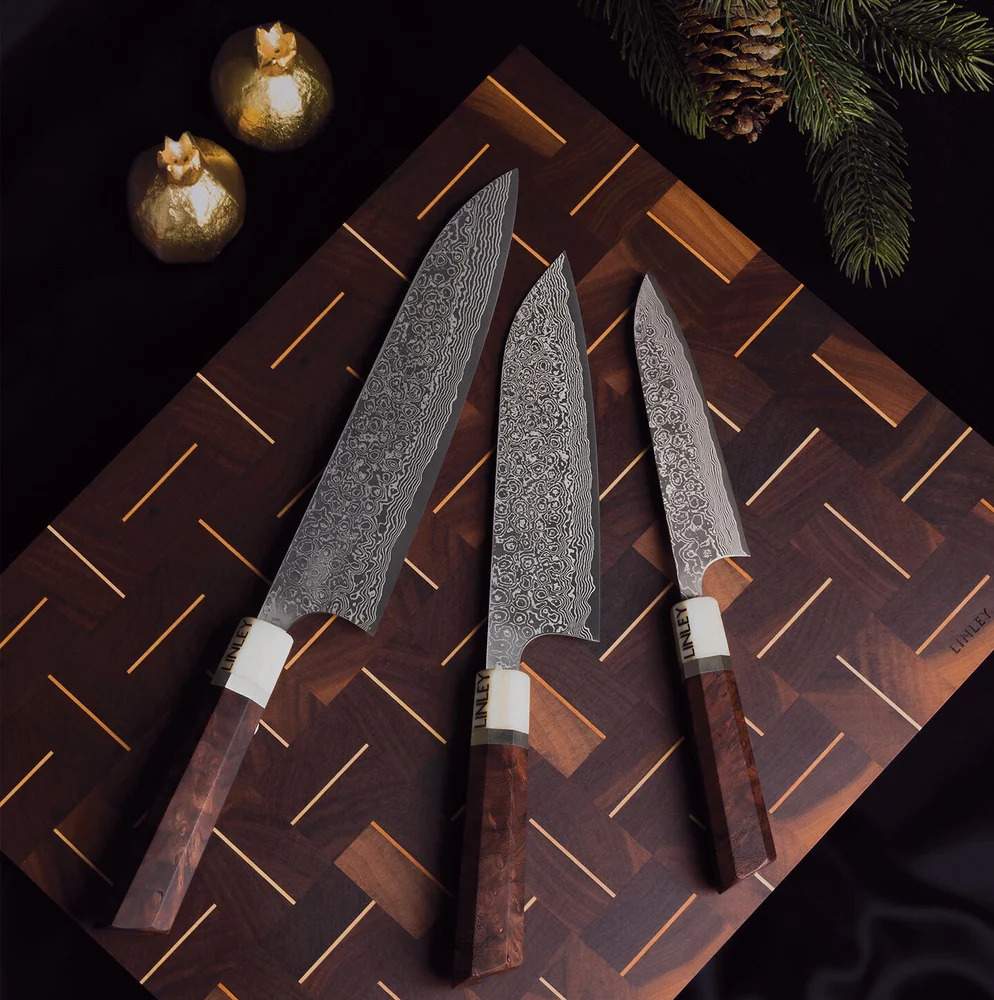Kitchen knives are important pieces of hardware for all home cooks and professional chefs. To have the right kitchen knives available for all cutting jobs is very important. No one knife can perform all kitchen cutting jobs efficiently. Different types of ingredients including meats, vegetables, fruits, breads, and others will need different knife blades for efficient cutting, dicing, and chopping.
The list of kitchen knives available today is a long one. However, with only four specialized knives, all cutting and dicing jobs in home kitchens can be performed perfectly. Of course, the kitchen knife set for a professional chef will have more variety. The four basic knives every kitchen should have, are listed below. Read to the end to find out more:
1: The Chef’s Knife
There is no magical knife that will do just about every kitchen job. However, the only thing that comes close to that feat is the chef’s knife. The typical length of a chef’s knife will be 8-10 inches. However, some Japanese versions will be shorter at 6-7 inches in length.
Chef’s knives will most likely be curved, allowing for a rocking motion while cutting. This single knife will get many jobs done including cutting and dicing meats, vegetables, and more. Also, these knives allow for precise clean cuts. However, most chef’s knives will be very sharp when new.
Versatile as they may be, chef’s knives are known to be not so efficient with crusty soft-core breads. However, when you get good with cutting skills, the chef’s knife will make your life in the kitchen a lot easier.
2: The Paring Knife
When you need control and detailed cutting, the paring knife will be your best friend. Whether you are slicing garlic cloves or going through strawberries, the precision of a paring knife will be very helpful. This is due to its enhanced grip that provides a more secure feel when cutting.
So, whether it is peeling apples that you need to get done or something more delicate, make sure to have a paring knife in your kitchen arsenal. Also, paring knives are important tools for pro chefs too.
While it is no replacement for a chef’s knife, the paring knife has its own applications. Make sure to keep it sharp enough and it will make your delicate cutting jobs much easier and more efficient.
3: The Serrated Knife (Bread Knife)
Also known as bread knives, the serrated knives specialize in bread cutting. With a saw-like edge, these are made to run through crusty soft-core breads. Also, for hard-shell soft-core fruits like pineapples, you will find serrated knives the most helpful and easy to use.
Also, their serrated edges make cutting through cakes a lot easier as well. For a big loaf of bread or piece of cake, you will need a long blade to cut through. This is where serrated knives with long blades come good. So, your serrated knife should be long enough for most loads of bread.
This longer length will enable you to cut through bread in one motion without having to cut the bread in steps. Much cleaner bread slices will be available. Also, the handle should be long enough for grip.
4: The Cleaver
For force cutting, cleavers will be the most useful. Cutting up squash or breaking down bones will be tasks reserved for heavier, larger blades like the cleaver. These can also help when you need to pound the meat and dice vegetables.
Some chefs will use their cheese and meat cleavers for more jobs than cutting. They have been used as bench scrapers as well. Also, the thinner, wider blade of the cleaver will make it easy to run through tough ingredients and products.
Make sure your cleaver has the required weight to it for force cutting. Also, keep it sharp with regular sharpening to enable quick cutting for hardy ingredients.
How to Maintain Kitchen Knives Sharpness for Longer?
Kitchen knives are only good when they are sharp. A lot of people think sharper knives are less safe to use. However, that is not the case. Dull knives will need a lot more force to cut through the simplest of ingredients. Sharper knives will run through them much more easily. This makes sharper knives actually safer to use. Here’s how you can keep your kitchen knives sharper for longer:
· Honing and Sharpening Regularly – Make sure to hone and sharpen your kitchen knives regularly. Ideally, honing should be done before every use. Detailed sharpening sessions should take place every couple of weeks.
· Wash Knives by Hand Not in the Dishwasher – It is always tempting to throw your knives into the dishwasher. However, micro bends on the edges and even cracks will cause the knives to dull much quicker. So, wash your kitchen knives by hand to maintain sharpness.
· Properly Dry Before Storing – Let the knives dry completely before storing them away in closed spaces. Even if you have stainless steel knives that won’t rust, their screws or rivets can catch rust. Dry them with a clean cloth and leave them outside before storing them.
· Storing Your Kitchen Knives, the Right Way – There is a lot more to knife storage than many people think. Use magnetic knife strips, drawer organizers, or wooden blocks with precise cuts for knife blades. Throwing in drawers with other metals will dull the edge faster.
Buying the Right Knives Is Important
Selecting your knife carefully is always the best way to go. Choose the right type of steel. High-carbon steel knives will always be more susceptible to damage and early wearing. Select Damascus knives made from high-grade steel. Stainless steel knives with low carbon content tend to last much longer as well.
Also, make sure the handle materials are right offering a lot of grips. The right type of knife will make your kitchen life a lot easier. If they are too cheap, they will not be made to last long. Make the right selection by reading reviews and relying on previous experiences for the best results.














